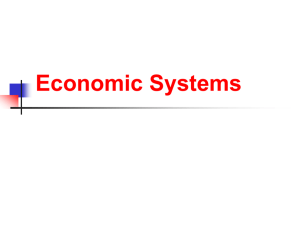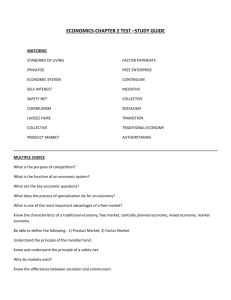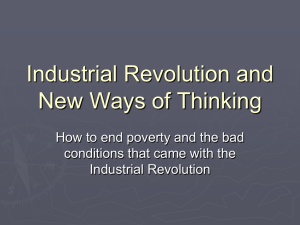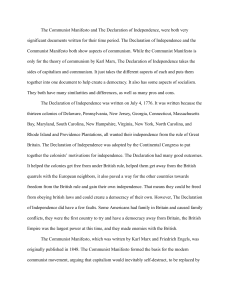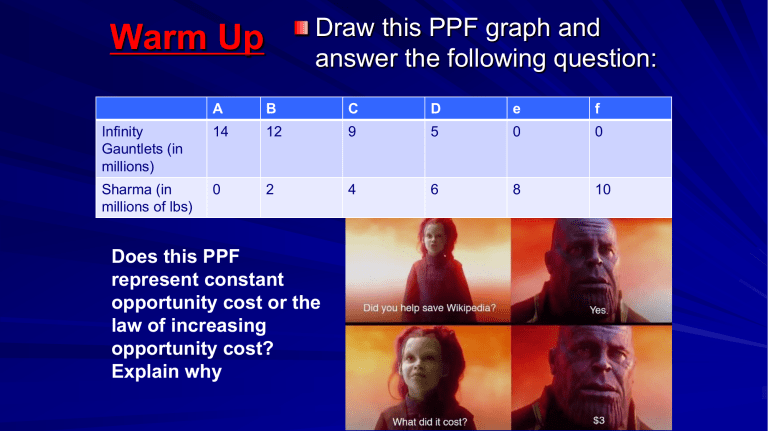
Draw this PPF graph and answer the following question: Warm Up A B C D e f Infinity Gauntlets (in millions) 14 12 9 5 0 0 Sharma (in millions of lbs) 0 2 4 6 8 10 Does this PPF represent constant opportunity cost or the law of increasing opportunity cost? Explain why 2 more practice problems For each table: – graph the PPF – list the opportunity cost a-b, b-c, c-d, d-e – Explain if the opportunity cost is constant or increasing A B C D E Loaves of bread 12 10 7 4 0 Bran muffins 0 35 63 84 100 A B C D E Guns (millions) 10 9 7 4 0 Butter (millions of lbs) 0 1 2 3 4 Econ Systems and Theories Traditional Economies Def: Economic Questions answered by custom Predominately Agricultural Developing or “3rd World” Trade and barter oriented Low GDP & PCI (per capita income = avg. inc.) Adam Smith 18th century Scottish economist Published The Wealth of Nations in 1776 Explained the workings of the free market within capitalist economies Invisible hand of the market Adam Smith (cont.) Laissez-faire - Government stays out of business practices “hands off” to let the market place determine production, consumption and distribution. Individual freedom and choice emphasized (if everyone seeks their own self interest, it will meet societies needs) “It is not from the benevolence of the butcher, the brewer, or the baker that we expect our dinner, but from their regard to their own interest” – Adam Smith, The Wealth of Nations Karl Marx 19th century German economist Author of Communist Manifesto and Das Kapital – Government should control economy and distribute goods and services to the people One of the Founders of revolutionary socialism and communism Quotes from Marx the Communist Manifesto • “The history of all hitherto existing society is the history of class struggles. • “Let the ruling classes tremble at a Communistic revolution. The proletarians have nothing to lose but their chains. They have a world to win. Workingmen of all countries unite!” • “In proportion therefore, as the repulsiveness of the work increases, the wage decreases.” • “The theory of Communism may be summed in a single sentence: The abolition of private property.” Command Economies Def: Economic questions answered by the government Very little economic choice No private ownership Communism, Socialism Old Soviet Union, old Communist China, Cuba and North Korea Market Economies Economic questions answered by producers and consumers Limited government involvement Private property rights Wide variety of choices and products Capitalism U.S., Japan Mixed Economy Government involvement and ownership and control of property, of decision making, and companies. Government control of business Social “safety net” for people Socialism + Captialism Common in Europe, Latin America, and Africa

